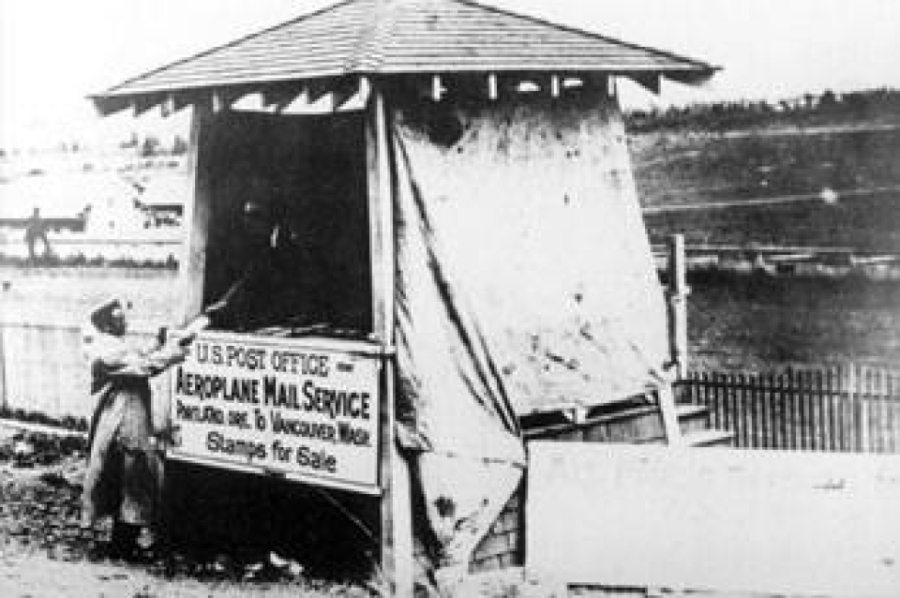A French balloonist, Jean-Pierre Blanchard, delivered the first airmail by crossing the English Channel with delivery of a single letter to France in 1785. In 1793, he delivered the first airmail in the United States, a letter from President George Washington.
Just a year before the Civil War broke out, John Wise ballooned from Layfette, Ind., headed for New York carrying 120 letters. Foul weather forced his landing just 25 miles from his lift-off point. The weather would continue its assault on deliveries in the early days of airmail flights.
Pearson Field in Vancouver contributes to the evolution of airmail and its troubles. Lincoln Beachey rose from the Portland fairgrounds at the Lewis and Clark Exposition on Sept. 19, 1905, flying across the Columbia River. He set his sausage-shaped dirigible Gelatine down on the barracks parade ground as awed Vancouver residents watched. The 18-year-old pulled several letters from inside his jacket and handed them to the postal clerk, Win Carson, who lugged them to the post office on Fourth and Washington streets.
Beachey also carried a message addressed to Gen. Constant Williams, commander of the Department of the Columbia, from Theodore Hardee, assistant to the exposition president. Severe winds prevented him from returning by air and forced his return by wagon. Whether he carried a response to Hardee isn’t known.
In 1912, the U.S. Post Office granted the Portland Post Office a temporary postal route, No. 673001, for an exhibition run. This route became the first sanctioned airmail flight in the Pacific Northwest and the first interstate airmail flight in the nation.
Rough signs at both ends declared the airplane mail service open for business. Walter Edwards piloted a pusher plane (the propeller was behind the pilot) on the weekend of Aug. 10 and 11, 1912. He carried 5,000 letters postmarked “Portland Aviation Station No. 1” to the barracks field.
Six months before the end of World War I, airmail service in the United States began. A letter sent by President Woodrow Wilson was among the first batch of messages. At first, Army pilots flew the mail. Rates were 24 cents an ounce but quickly dropped to 16 cents. Still, the public shunned such expensive rates.
Expensive rates opened the airmail service to entrepreneurs like Vern Gorst and Walter Varney, who used Pearson Field for their airmail transport companies. Gorst’s company was Pacific Air Transport and Varney’s was Varney Airmail. Both companies flew West Coast routes.
During the 1920s, pilots lacked radios, flight instruments, landing lights, direction beacons and flight towers. They flew by intuitive dead reckoning or by following highways, railroad tracks or rivers. There was even a rumor that some pilots created crude altimeters by somehow anchoring a half-empty pint of whiskey to the dashboard before them to keep the plane’s wings level.
Pilot inexperience caused many crashes. The death toll only remained low because early planes were slow, maneuverable and landed in any open space, whether golf course, beach or pasture. Still, 34 airmail pilots died between 1918 and 1927 from capricious weather and undependable equipment.
Martin Middlewood is editor of the Clark County Historical Society Annual. Reach him at ClarkCoHist@gmail.com.



